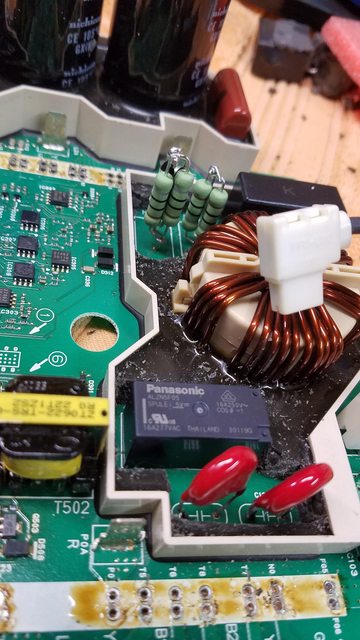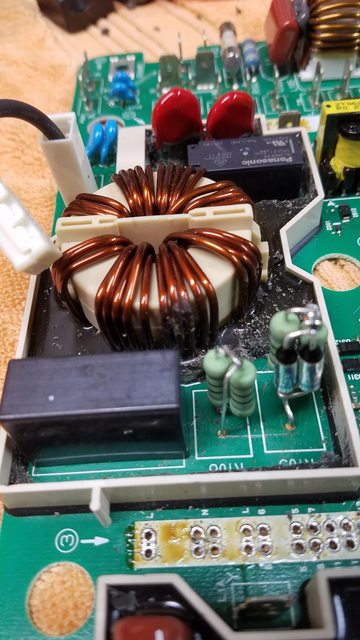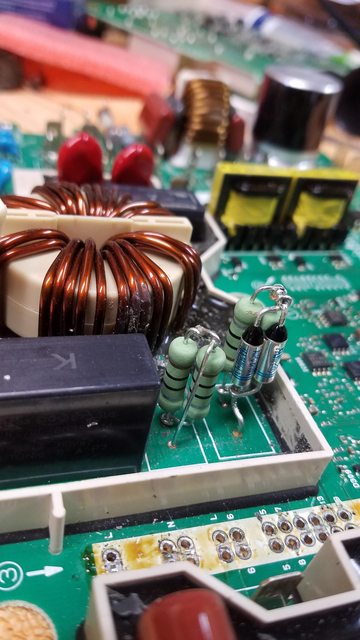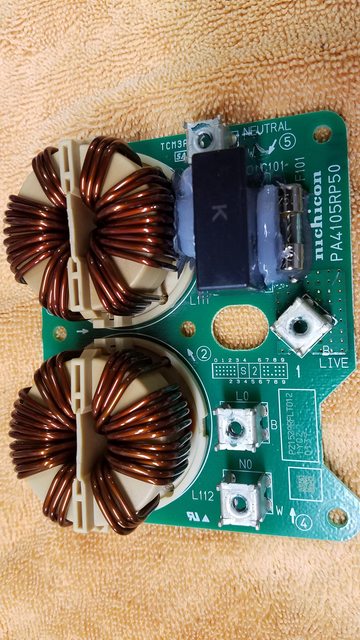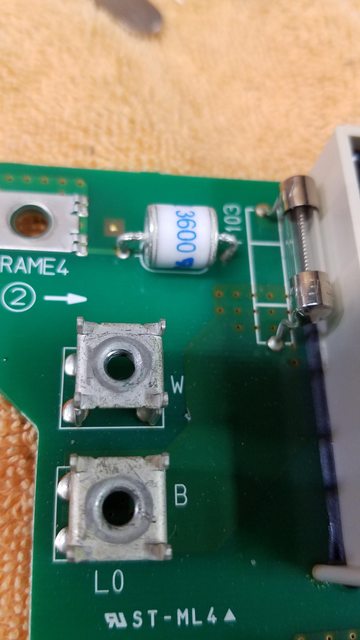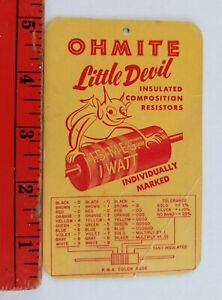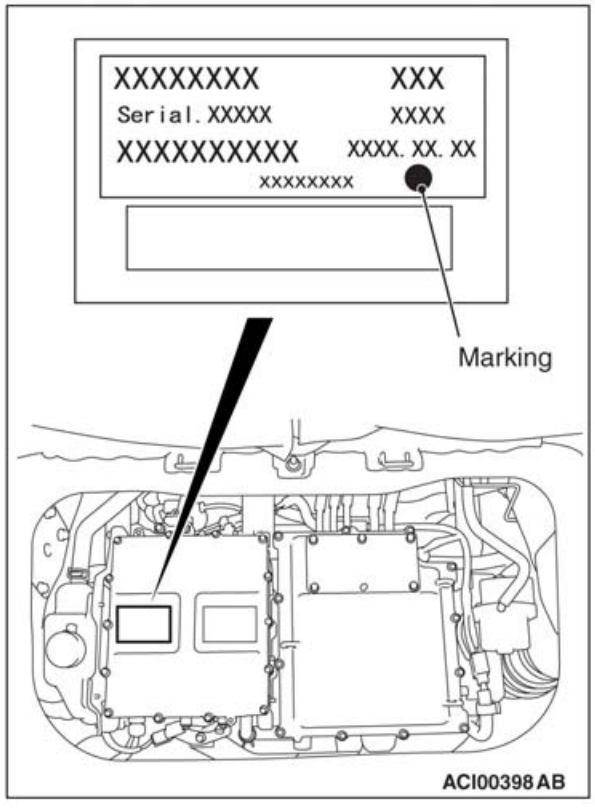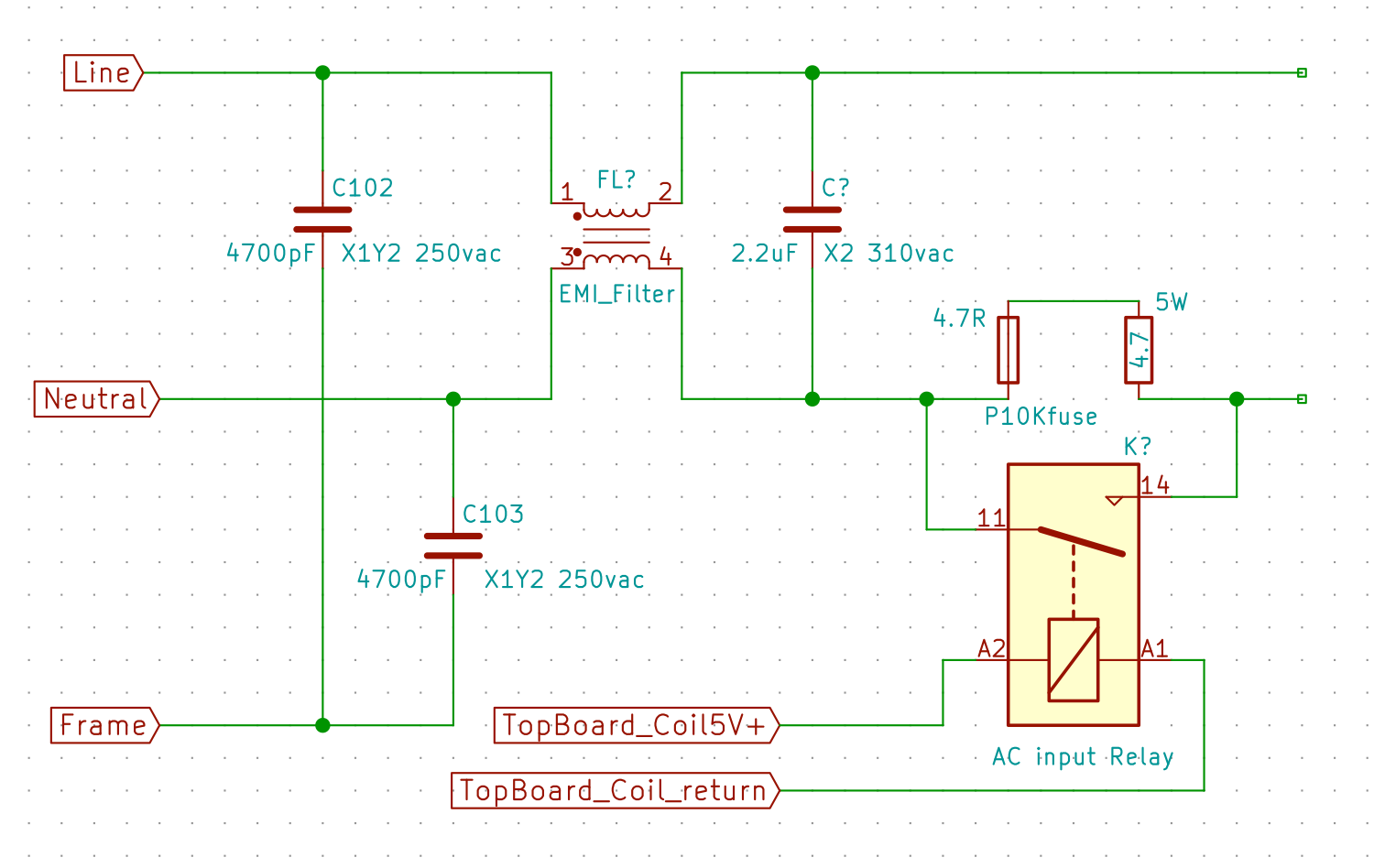What I'm choosing to see as cautiously optimistic good news is the fact that my car is charging. It's been a long, anxiety-producing and frequently interrupted journey, which isn't quite over yet, but it looks like I'm on the home stretch.
I re-assembled everything but didn't seal it up yet. Re-connected the pack and 12V battery. Since I'm not sure if my 12V had something to do with the problem, I put a charrger on it and turned it up to 13.8V. When I turned the car on it went up to 14.4V as expected. I'm leaving the charrger on this cycle to eliminate the 12V battery as a potential problem. If all goes well, I'll yank it out and have it tested under load.
While it was on and Ready I checked for trouble codes and only found two. They were U-prefix comm errors which I figured were inconsequential.
My issues were fairly normal. No problems with snubbers, but they had a slightly brownish tint so I replaced them. (Thanks to @Kiev for saving me from my electrical dolt anxiety over what constitutes a proper snubber cap.) Also replaced the relay with a Panasonic unit I found with a 105 °C rating and coil specs similar to the original:
https://www.digikey.com/en/products...467574?s=N4IgTCBcDaIIYBsBeA7ArAMwAxoO4gF0BfIA. Also my surge arrestor (gas discharge tube) had a crack that was visible under magnification, so I replaced it with this:
https://www.digikey.com/en/products...=N4IgTCBcDaIM4EMwFoDMA2ADJgxgGwBdk4CATEAXQF8g
Those were precautionary. My blown parts were the 2.2 µF caps (both, one on the lower charrger board and one in the AC inlet box on top of the charrger enclosure) and the big ceramic 4.7 Ω resistors. The resistors had become very hot (the non-fused one cracked), but both still conducted. The non-fused one is closest to the 2.2 µF cap, which oozed a lot of schmutz seemingly just from heat. (Not sure what blew the other cap.) The resistor with the internal fuse had a scorched spot near the windings, but the resistor still conducted. The fuse had popped.
The resistors were the biggest challenge because direct replacements don't exist. Some have made some inventive hacks, but I thought I'd try @Coulomb's idea of 2 fat 10 Ω resistors in parallel for the resistor part, in series with some 157 °C, 16 A thermal fuses (paired in parallel) that I found here:
https://www.tme.com/us/en-us/details/bf157x/thermal-fuses/aupo/. They're cheap, but the shipping from Poland is anything but. (I still have a spare pair of those that I'm willing to pass on if this repair sticks.)
I started out with the car charging on 120 VAC at 10 A. Then bumped that up to 15 A. If it goes well I'll find a proper 240 VAC L2 charrger. (The initial failure happened while charging on 120 VAC at 15 A.)
Some new photos:
So all of this brings me to an important question. This failure happened while I was researching my next EV. I decided, found the one I wanted (out of state) and bought it while the i-MiEV repair was underway. (It's an Ionic(q) 6 Limited RWD, a bit of a unicorn. Absolutely love it.) Now it's time to let the i-MiEV go. My question is, if you were considering buying an i-MiEV with a known charrger failure that was repaired by a DIYer, how many trouble-free charges would you want it to have under its belt before you'd be confident that the repair was as robust as anything else out there? I know there are plenty of people who would sell a questionable vehicle and figure any problems were the buyer's, but that's not me. I'm happy to use it instead of the new car until it's proven reliable. How/when do I know that?
Also, I bought a de-soldering station to pull the waffle plate. It's this one:
https://www.amazon.com/Digital-Deso...-1-spons&sp_csd=d2lkZ2V0TmFtZT1zcF9hdGY&psc=1. It's not top-of-the-line, but it's popular and the consumables are available from multiple sources for cheap. I'd never used one before, but it worked fine for me.
Once my car is well and truly fixed I can't see myself needing a desolder station again. So I thought I'd sell it for half price plus shipping. If the next person uses it and sells it for half price to the next person who needs it, etc., pretty soon it'll be available to anyone who needs one for the price of shipping. I guess the only flaw in that plan might be that there aren't that many i-MiEVs in the US. (This unit runs on 120 VAC.) But OTOH, many of the ones on the road here are at ever-higher risk of a charrger failure. So maybe it would be well-traveled after all.

















































